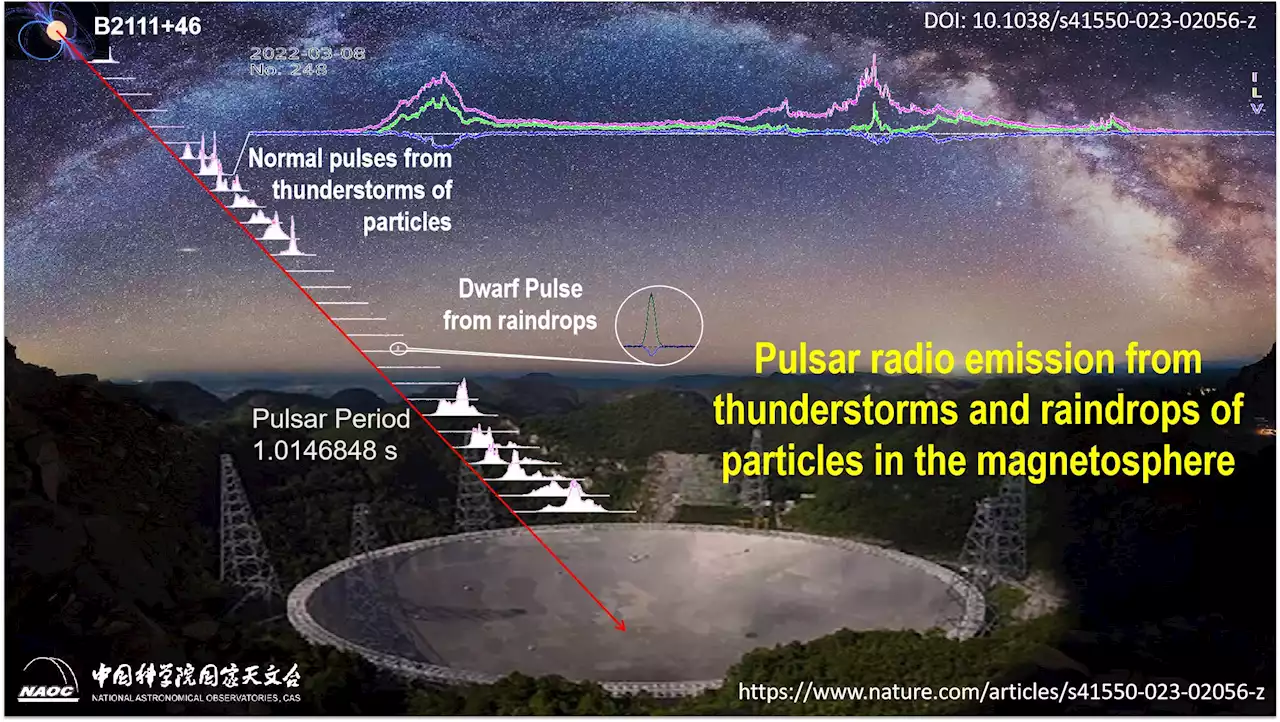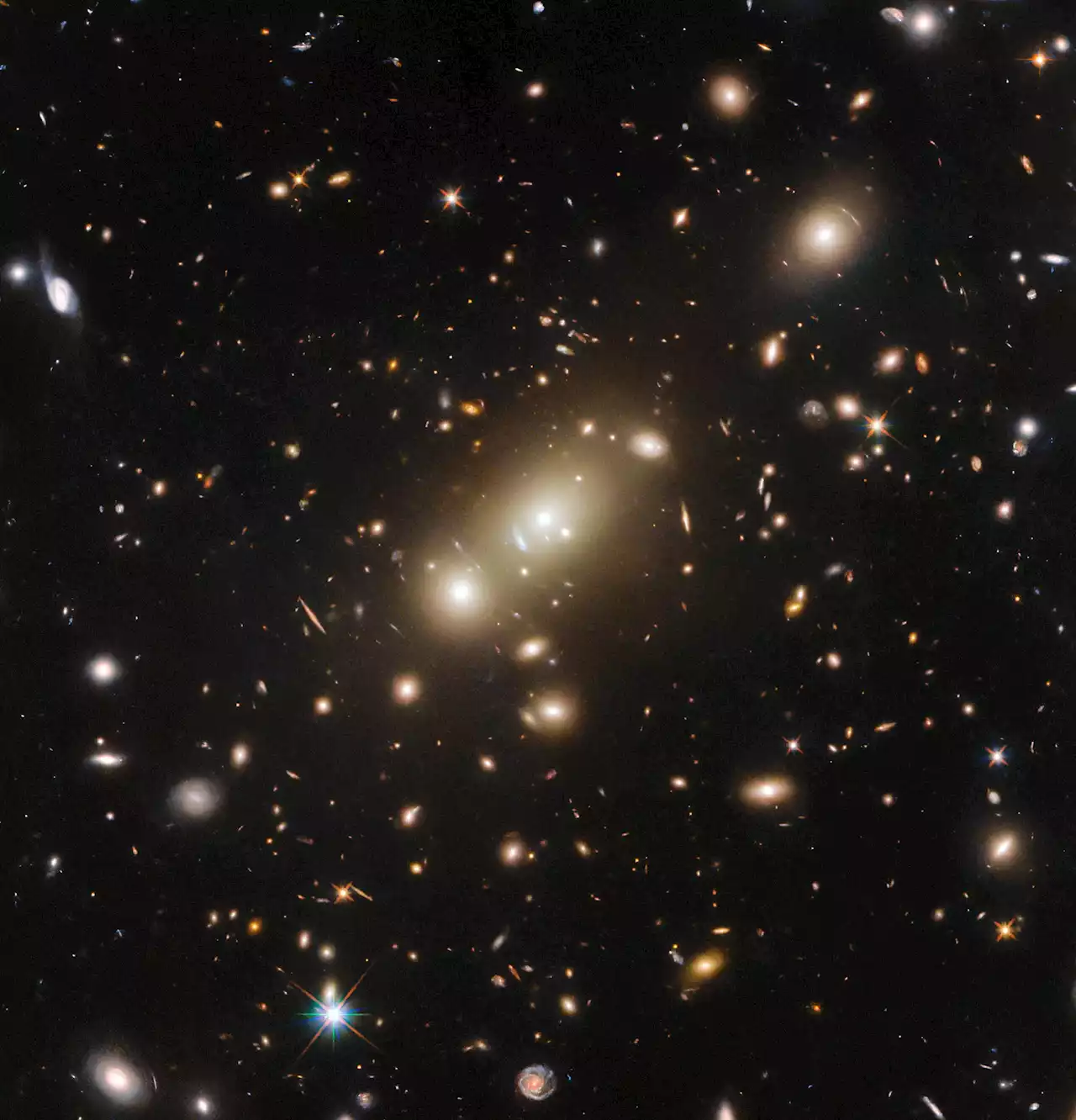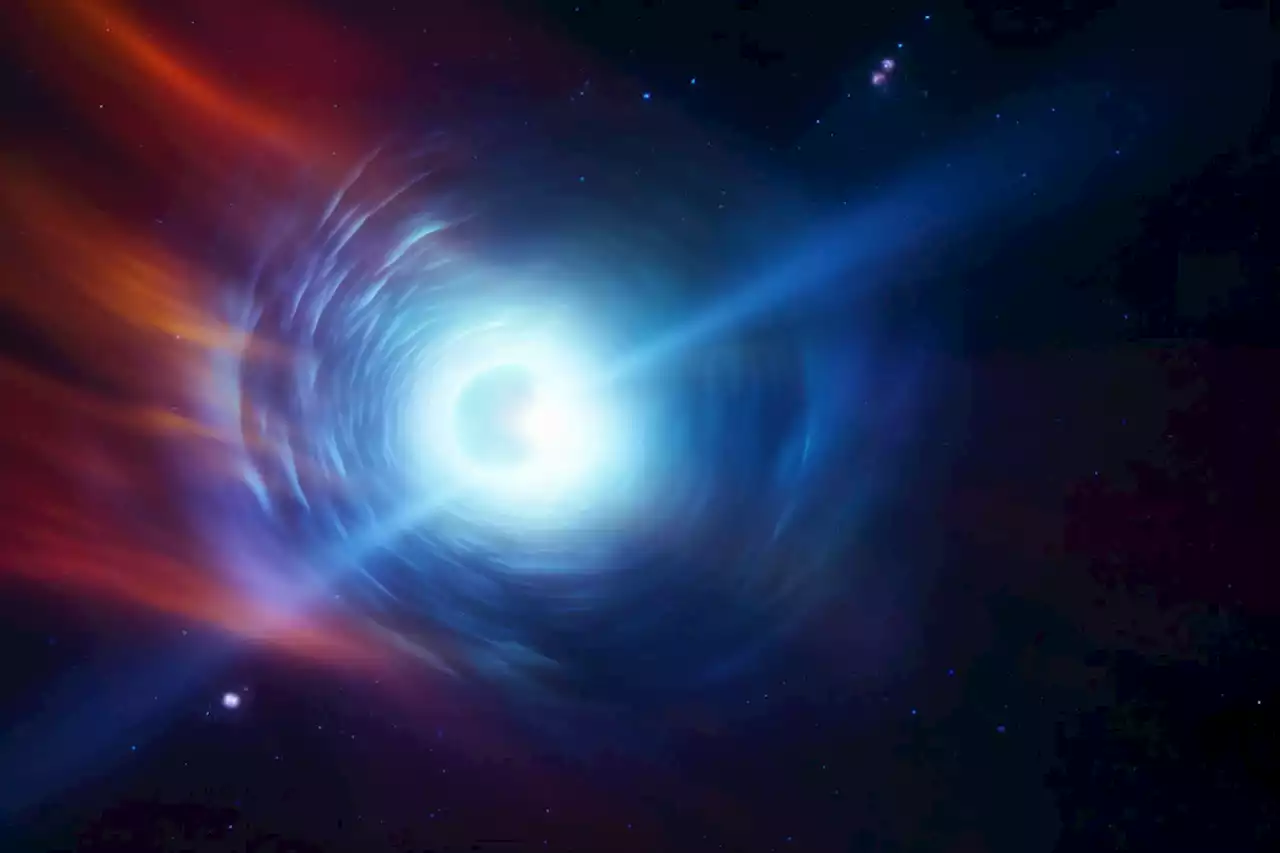Using the FAST telescope, researchers discovered unique 'dwarf pulses' from pulsar PSR B2111+46, potentially unveiling unknown aspects of pulsar radiation and plasma conditions. Using the Five-hundred-meter Aperture Spherical radio Telescope (FAST), a research team led by Prof. Jinlin Han from th
A team of astronomers discovered “dwarf pulses” from the pulsar PSR B2111+46 using the FAST telescope. Unlike regular pulsar emissions, these weak, narrow pulses represent a unique radiation state, often exhibiting a rare reversed spectrum. The study suggests that these pulses could help unveil the mysteries of pulsar radiation processes and the extreme plasma conditions within a pulsar’s magnetosphere.
Pulsar radio emission from thunderstorms and raindrops of particles in the magnetosphere of PSR B2111+46 detected by FAST. Credit: NAOC To verify this new kind of emission state, the researchers observed this pulsar for two hours again on March 8, 2022. “Finally, we picked out 175 such narrow, weak pulses,” said Dr. Xue Chen, the first author of the study. According to Dr. Chen, such pulses stand out from normal pulses in terms of pulse width and energy, and thus have been named “dwarf pulses.”
These sporadic, weak, and narrow pulses constitute a new radiation state independent of normal pulses, and such pulses often exhibit a rare reversed spectrum, i.e., they have much stronger emission at higher radio frequencies, something that is very rarely detected in such a distinguished timescale from astronomical sources. “The properties of such dwarf pulses would be hard to be measured by other radio telescopes than FAST,” said Prof.
United States Latest News, United States Headlines
Similar News:You can also read news stories similar to this one that we have collected from other news sources.
 Fast X Peacock Release Date Set for Latest Fast & Furious MovieThe Fast X Peacock release date has been set for the latest and most explosive entry in the Fast & Furious film series.
Fast X Peacock Release Date Set for Latest Fast & Furious MovieThe Fast X Peacock release date has been set for the latest and most explosive entry in the Fast & Furious film series.
Read more »
 A Rumble in the Cosmos: Pulsar Timing Yields Evidence of Cosmic Background Gravitational WavesAstrophysicists report evidence that the cosmos is filled with a background of gravitational waves likely due to mergers of supermassive black hole binaries. Researchers from around the world have found compelling evidence of a cosmic hum caused by gravitational waves, likely produced by hundreds
A Rumble in the Cosmos: Pulsar Timing Yields Evidence of Cosmic Background Gravitational WavesAstrophysicists report evidence that the cosmos is filled with a background of gravitational waves likely due to mergers of supermassive black hole binaries. Researchers from around the world have found compelling evidence of a cosmic hum caused by gravitational waves, likely produced by hundreds
Read more »
 Scientists use FAST to discover a new population of 'dwarf' pulsesUsing the Five-hundred-meter Aperture Spherical radio Telescope (FAST), a research team led by Prof. Han Jinlin from the National Astronomical Observatories of the Chinese Academy of Sciences (NAOC) has detected distinct 'dwarf pulses' from a bright pulsar PSR B2111+46, studied the radio emission in unprecedented detail and probed the unknown physics in the magnetosphere.
Scientists use FAST to discover a new population of 'dwarf' pulsesUsing the Five-hundred-meter Aperture Spherical radio Telescope (FAST), a research team led by Prof. Han Jinlin from the National Astronomical Observatories of the Chinese Academy of Sciences (NAOC) has detected distinct 'dwarf pulses' from a bright pulsar PSR B2111+46, studied the radio emission in unprecedented detail and probed the unknown physics in the magnetosphere.
Read more »
 Cosmic Leviathan Unveiled: Hubble Space Telescope Captures Truly Massive Galaxy ClusterIn the center of this image from the NASA/ESA Hubble Space Telescope, basks the truly massive galaxy cluster 2MASX J05101744-4519179. This distant galaxy cluster is a cosmic leviathan that is highly luminous at X-ray wavelengths. Observing galaxy clusters like 2MASX J05101744-4519179 can advance
Cosmic Leviathan Unveiled: Hubble Space Telescope Captures Truly Massive Galaxy ClusterIn the center of this image from the NASA/ESA Hubble Space Telescope, basks the truly massive galaxy cluster 2MASX J05101744-4519179. This distant galaxy cluster is a cosmic leviathan that is highly luminous at X-ray wavelengths. Observing galaxy clusters like 2MASX J05101744-4519179 can advance
Read more »
 James Webb Space Telescope confirms 'Maisie's galaxy' is one of the earliest ever seenNamed for its discoverer's nine-year-old daughter, this galaxy is one of the oldest realms to be witnessed by humanity.
James Webb Space Telescope confirms 'Maisie's galaxy' is one of the earliest ever seenNamed for its discoverer's nine-year-old daughter, this galaxy is one of the oldest realms to be witnessed by humanity.
Read more »
 Galaxy Spotted By Webb Space Telescope is One of the Earliest Ever SeenFollow-up observations of a distant galaxy suggest its age is about 13.4 billion years.
Galaxy Spotted By Webb Space Telescope is One of the Earliest Ever SeenFollow-up observations of a distant galaxy suggest its age is about 13.4 billion years.
Read more »
